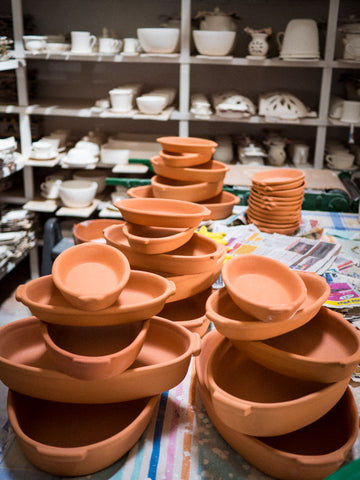Glazing Pottery
Next, we hand glaze the ‘biscuit ware’ in an opaque white glaze. In essence, this means submerging the biscuit ware manually into a bath of viscous, creamy white glaze. In other words we dip it! This task seems easy to the untrained eye, but it is actually a discrete and difficult skill that takes knowledge, patience, and attention to detail to execute well. Too little glaze will reveal the red clay below and too much may not adhere well to the clay’s surface leading to defects that will emerge in the final firing. The glazer must assess the viscosity of the glaze, mixing it very carefully and diligently, and they must have a keen understanding of the clay itself, continuously re-assessing the absorbency and judging the duration of time a piece must be submerged in the glaze bath to ensure a perfect coating.

This glazed pottery could now be fired to create a beautiful, simple white pottery - the type you find in many places - but this for us is only the beginning. This is the powdery white canvas on which our real work begins.

